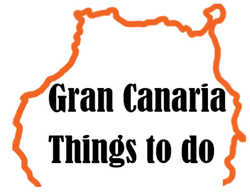how big is Gran Canaria
HOW BIG IS GRAN CANARIA?
HOW BIG IS GRAN CANARIA?
If you already know where it is, your next question might be how big is Gran Canaria? Big enough to be interesting, small enough to enjoy it
Surface & Coast Line
Surface & Coast Line
Gran Canaria has a Surface of 1.560 km2 and a coastline with 236 kilometers!
From North to South
From North to South
From North to South the island is around 70 kilometers long.
From East to West
From East to West
And how big is Gran Canaria from east to west? Also around 70 kilometers.
A circular island, a crazy relief
A circular island, a crazy relief
The first clue to understanding how big is Gran Canaria is its shape. The volcanic island of Gran Canaria was formed around a central volcanic area. Because of this origin, the island has a circular shape. With more or less the same distance from north to south, and from east to west: 70 kilometers
The island has a total Surface of 1.560 square kilometes, with 236 kilometers of coast line to enjoy. Approximately half of this coast line consists of beautiful white sand beaches, while the other half consists of rocky beaches and breathtaking cliffs. Around one quarter of the coast is completely touristic, while two quarters are mainly enjoyed by locals, with one quarter of the island remaining untouched from the human hand. The West Coast is the only side of the island without a highway and reserves the most virgin territories for those locals and visitors willing to enjoy adventures and hiking routes of another planet.
Due to the above mentioned volcanic origin no matter in what direction, the island grows when you move from the coast direction the heart of the island, reaching the peaks at almost 2.000 meters. This unique shape of the island where you go from sea level to 1.949 meters withtin 40 kilometers is incredible. It allows visitors to enjoy the coast and the highest peaks within a couple of minutes. Understanding the crazy relief of the island is part of understang how big is Gran Canaria.
Moving around the island
Moving around the island
Besides the West Coast, the rest of the island is very well connected with a highway across the coast line. You will need approximately 40 minutes to drive from the south of the island in Maspalomas to the capital Las Palmas at the NorthEast corner. From NorthEast to NortWest you also need 40 minutes. Thus, you could drive from the South to Agaete (NorthWest) within 90 minutes. The west coast… that's another story. There is a road, although not a highway. If you don't like driving in a narrow road at a huge Cliff right next to the water, than there is no need to drive further than Agaete in the northwest corner, or Mogán in the southwest corner of the island. You can see and feel how big is Gran Canaria even without taking this road.
In the inner part of the island there is no highway since it is impossible due to the island's relief. The roads are very good though. They are safe and very good maintained. You can drive very good around the island's peaks and villages. Only if you get a little dizzy when driving with many curves you should be aware that: Yes! There are some curves when you get from 0 to 1.949 meters within an hour. However it is only a small portion of the way where the road has constantly curves. For most of the way the roads are pretty easy to drive.
Getting around without a car
Getting around without a car
It is incredible easy to move around the island with a car. Rental cars are extremely affordable compared to many other regions of Europe. It is worth to take a car for at least 2 or 3 days now that you know how big is Gran Canaria.
If not, you can still get around easily, although not everywhere. If you are in Las Palmas, you have the best options. You can reach the south of the island (Maspalomas) with a bus ride within an hour. Although be careful: look for the direct lines. If you take one of the indirect lines you will be stopping in every single village between Las Palmas and Maspalomas. A 45 minutes ride may become a 2 hours ride. It is always worth to wait for the next direct bus. From Las Palmas you can easily reach places likes Agaete, Gáldar, Moya or Arucas in the north, and Teror or San Mateo in the center of the island. As well as any other location in the south: always keep in mind that depending on the place you might have to take an indirect bus with many stops.
While you can visit many places in the same day with a car you can still visit many of these places by bus but in different days. The peaks of the island (Roque Nublo, Pico de Las Nieves) are worth visiting and they are are not so easy to reach with public transport. There is actually one bus that only drives from Maspalomas, and only a few times a day to a place close to Roque Nublo. If you want to see the peaks of the island, you should rent a car or book an excursión.
